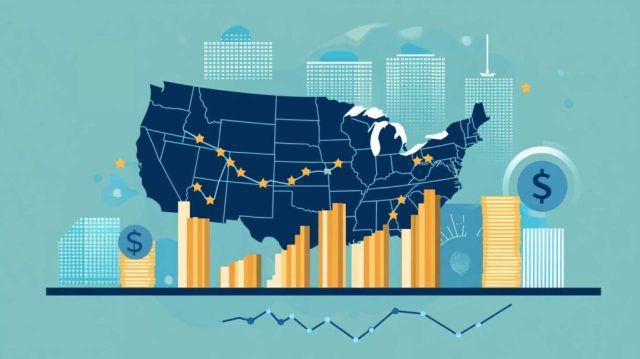[ad_1]
ANN ARBOR – Despite a recent and rapid cooling of the labor market, the underlying momentum in the economy remains strong—meaning a slowdown is likely in the months ahead but not one that descends into a recession, according to University of Michigan economists.
However, the researchers are quick to note that uncertainties abound, with a close presidential election, war in Ukraine and the Middle East, tensions with China and fragility within the international financial system.
The findings come from the latest U.S. Economic Outlook released by U-M’s Research Seminar in Quantitative Economics.
In the near term, the economists expect both the slowing labor market and inflation to pave the way for the Federal Reserve to steadily reduce the federal funds rate range—which influences consumer interest rates—at every meeting of the Federal Open Market Committee through next spring. The pace of interest rate cuts will slow thereafter.
Expectations that the rate-cutting cycle is about to begin are already easing financial conditions, in particular with drops in the 30-year fixed mortgage rate and 5-year Treasury note yield.
Researchers say recent upticks in unemployment are concerning but not necessarily cause for alarm. The significant inflow of new immigrants has likely increased labor supply at the lower end of the wage distribution, where unemployment rates are historically higher.
The run-up is not expected to cause too much economic trouble based on robust consumer demand for goods and services and solid business fixed investment.
The forecast calls for real gross domestic product—the inflation-adjusted value of everything produced in a country—to slow from its 2.8% annualized expansion pace in the second quarter of this year to 2.1% and 1.3% in the final two quarters, respectively. Calendar-year real GDP growth registers 2.6% this year, then moderates to 1.9% in 2025 and rebounds to 2.5% in 2026.
The unemployment rate is expected to keep inching up to a peak of 4.6% by the second quarter of next year, then declining to 4.3% by the end of 2026 as monetary policy loosens.
“Although we forecast the labor market to continue cooling off through the first half of next year, we believe that the Fed’s pivot to looser monetary policy will arrive in time to forestall a recession,” said Gabriel Ehrlich, RSQE director and co-author of the U.S. forecast.
Several recent economic data series based on surveys of consumers and businesses offer a mixed picture. U-M’s Consumer Sentiment Index has been trending down from an already weak average level earlier this year. Except for a brief recovery in March, the Institute for Supply Management’s index for manufacturing has been signaling slowing activity since November 2022. However, the ISM index for the service sector bounced back in July to show a moderate expansion after a weak reading in June.
Federal fiscal policy could diverge substantially depending on the change in the balance of power in Washington after the elections in November. With middle-ground election outcome assumptions, the federal budget deficit does not improve over the next two years, averaging 5.6%-5.7% of GDP.
The economists also have assumed a modest increase in import tariffs over the forecast period regardless of who wins the White House, but they add “the range of possible scenarios and their economic implications is large.”
Likewise, the war in Gaza and tensions between Iran and Israel risk triggering a broader war in the Middle East, and the forecast notes that could send shocks through global energy markets.
Overall, the economists say in the report, the U.S. economy “remains noisy and challenging to interpret.” They envision a “near-term slowdown … albeit from a healthy initial state.”
The forecast, produced four times per year since 1952, was prepared by Ehrlich, Jacob Burton, Kyle Henson, Daniil Manaenkov, Niaoniao You and Yinuo Zhang.
[ad_2]
Source link











